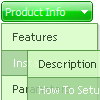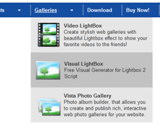Recent Questions
Q: I am afraid I am still having difficulties.
Key issue is fine, no problems there. However, I cannot seem to make this NOT showing me a window open example when the page opens. I just want to have popups upon click. What I want is to be able to create links, within the same page, that will popup windows of different content and size, all upon click (not upon page loading.
What am I doing wrong here?
In the site I have the following:
1. A www.domain.gr/deluxe-popup-window.files folder
2. A http://www.domain.gr/deluxe-popup-window.js script
3. and my test page creating the popups
So, in my sample page:
1. I do NOT want to have the 1st popup which loads automatically as the page opens
2. I want to have the 2 samples shown there, Sample 2 and Sample 3.
3. These 2 samples must show windows of different width and height.
Please help me here.
Looking forward to your answer.
A: Delete openAfter= text from the deluxePopupWindow.attachToEvent()function in the following file:
http://www.domain.gr/deluxe-popup-window.js
In that case popup window won't show till you click on the link.
deluxePopupWindow.attachToEvent(win,',,,,,')
Q: I have a question, why sample 2 item in my horizontal dropdown menu is disable?
A: To disable items you should set item target parameter as "_".
For example:
["|Sample 2 is Disabled","testlink.html", "default.files/icon6.gif", "default.files/icon6o.gif", "", "_", "", "", "", ],
Q: One intern design a menu for us using MenuTuner that we bought however Menu doesn’t work in Firefox or netscape.
It works fine in Internet Explorer.
Can you help? I’m attaching the zip file which you can extract and open index.html to see what’s wrong.
A: Try to specify units in "px".
var tmenuWidth = "230px";
It's necessary to specify exact value for Mozilla browsers. It helpsto position menus correctly.
You should set this parameter:
var tmenuHeight = "auto";
Q: More importantly, my last tab is showing up as active when the page with java floating menu loads...
A: See the following parameter:
var bselectedItem=0;
You should set index of the item you want to select.











